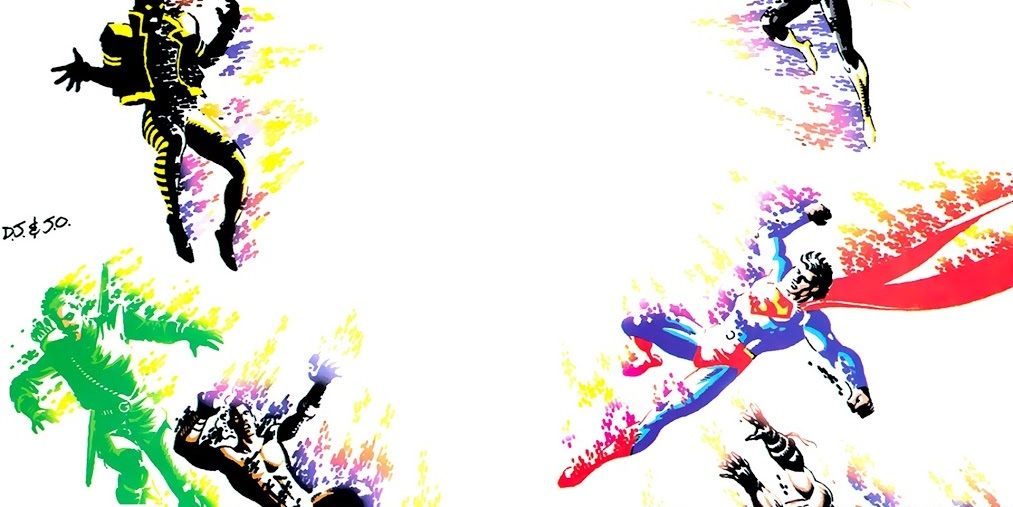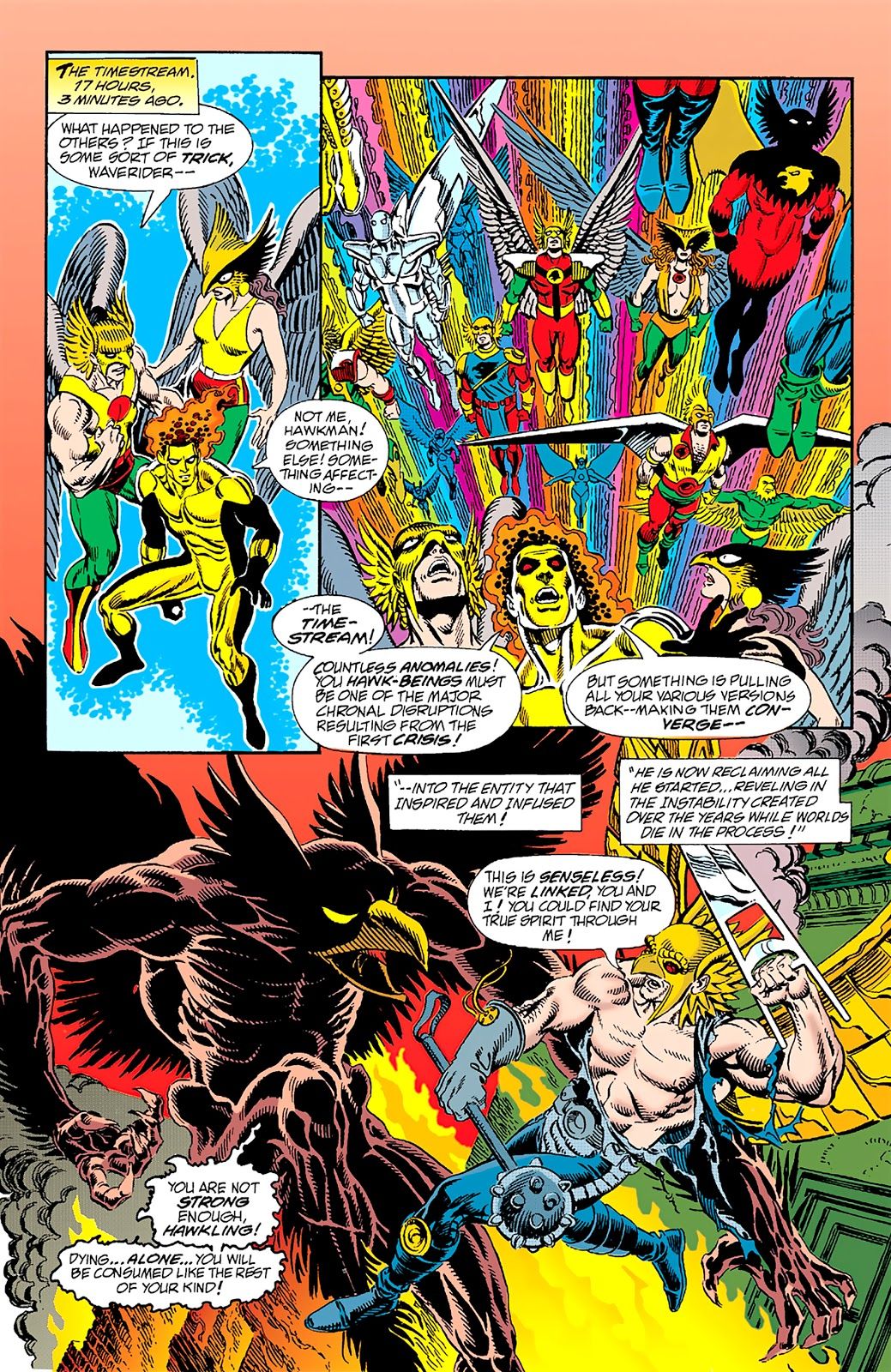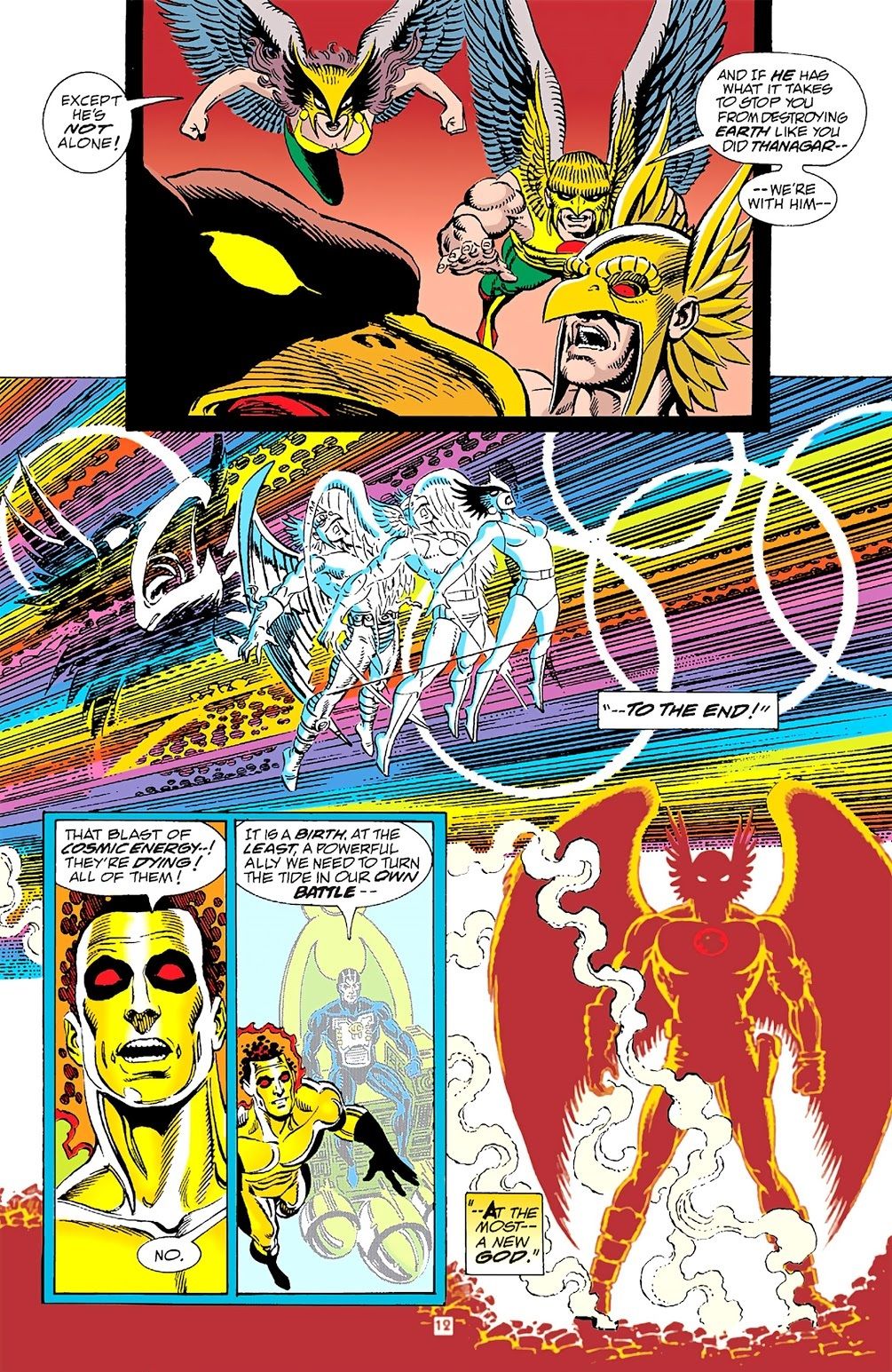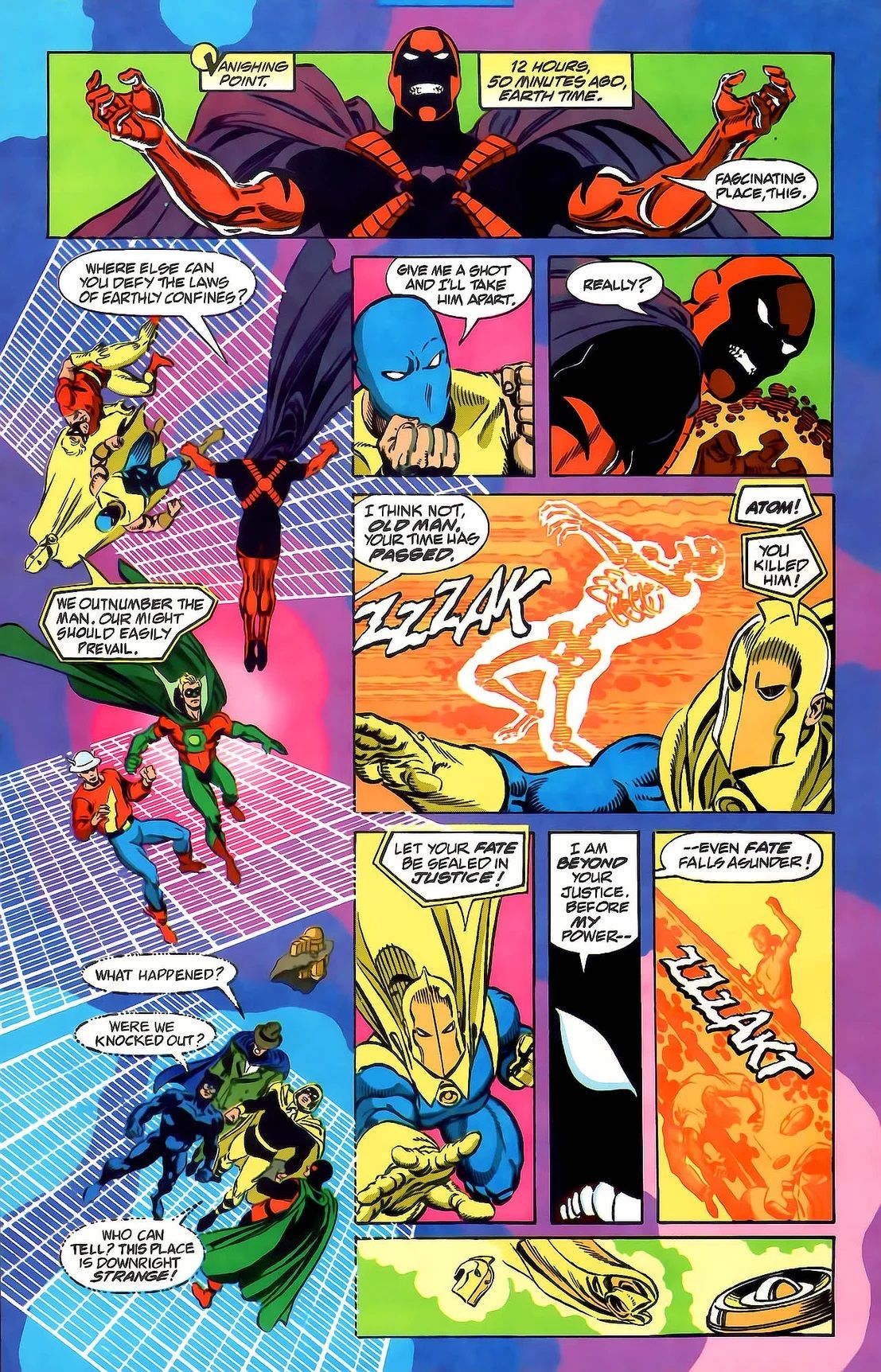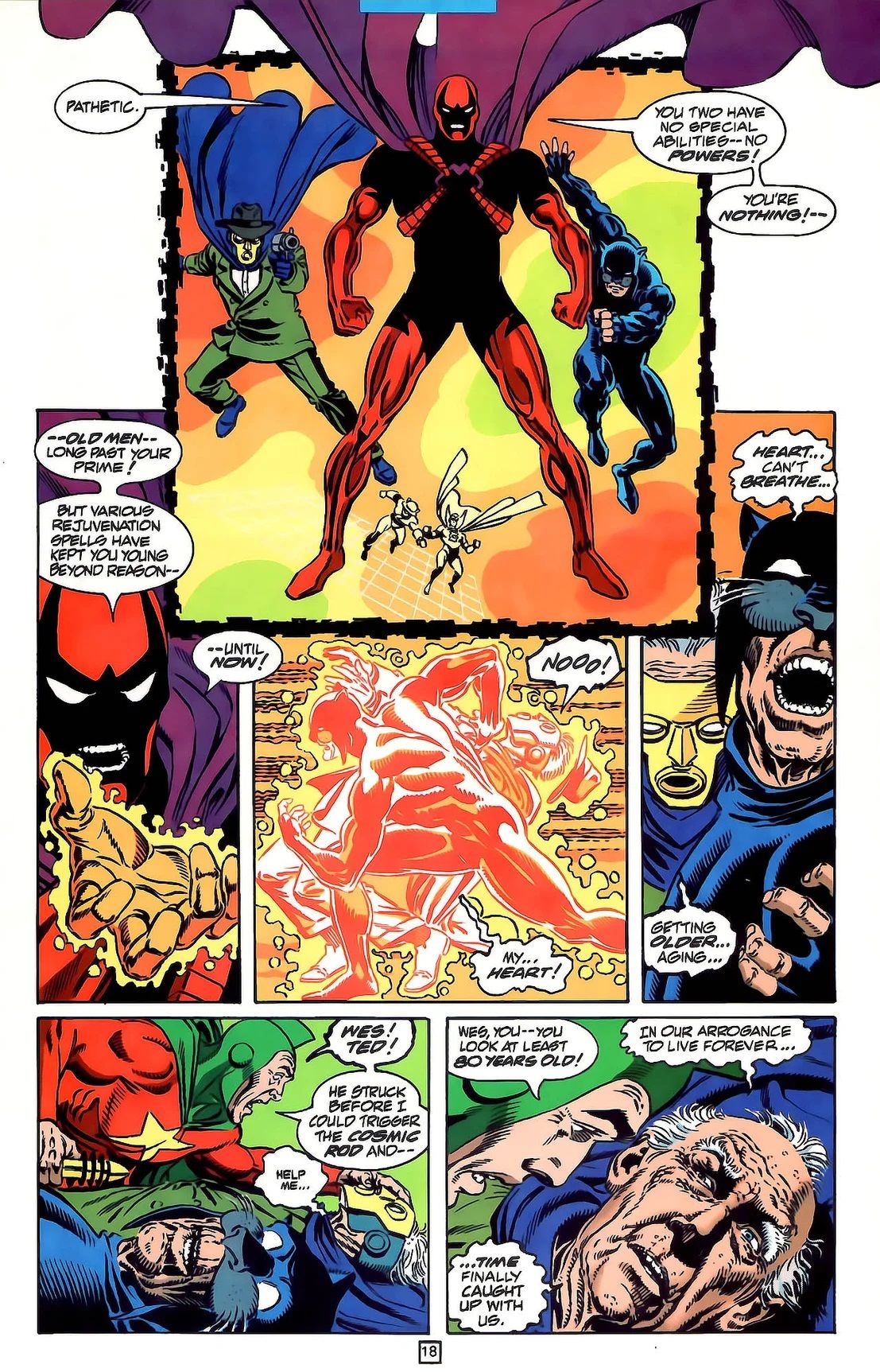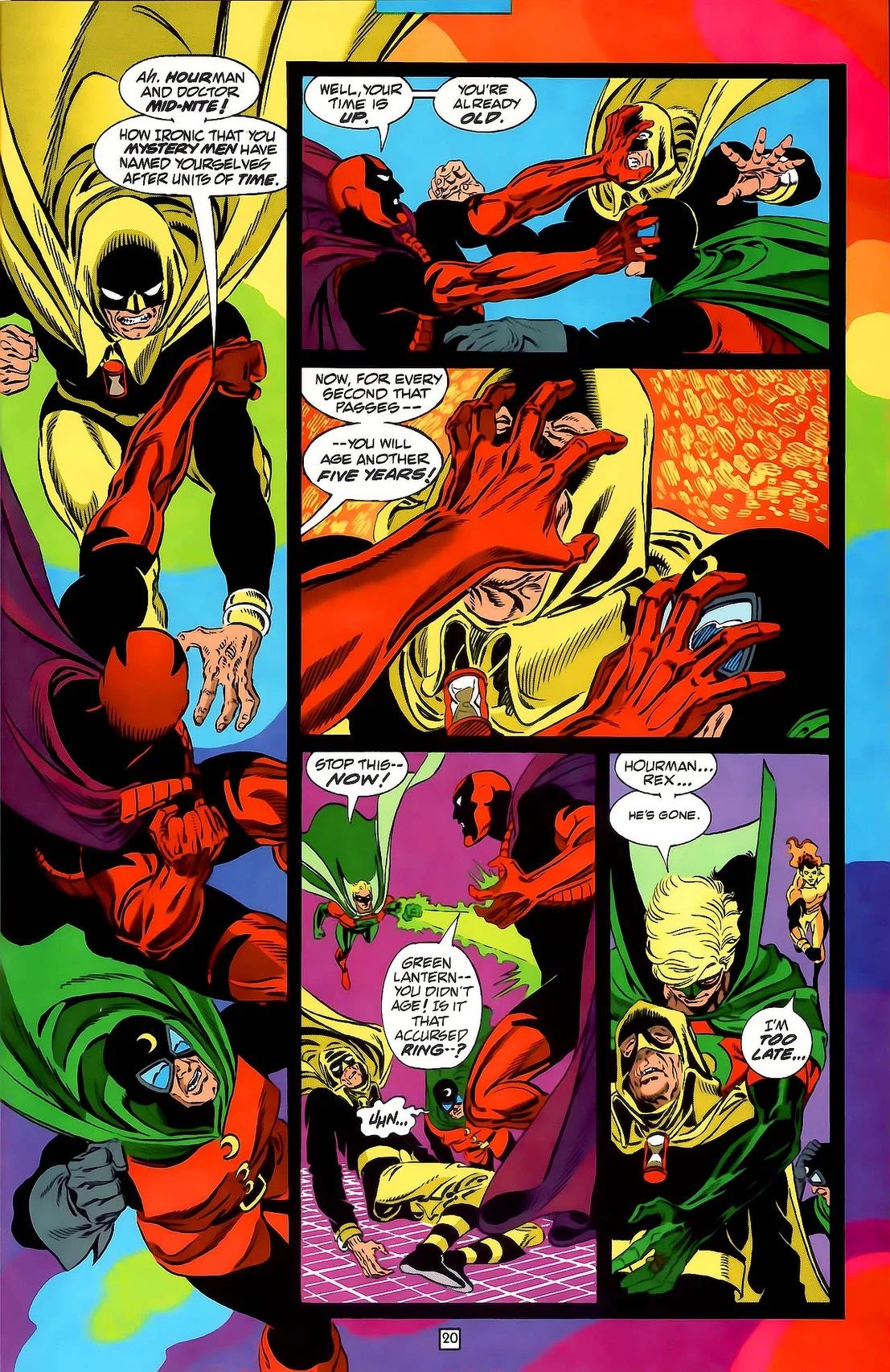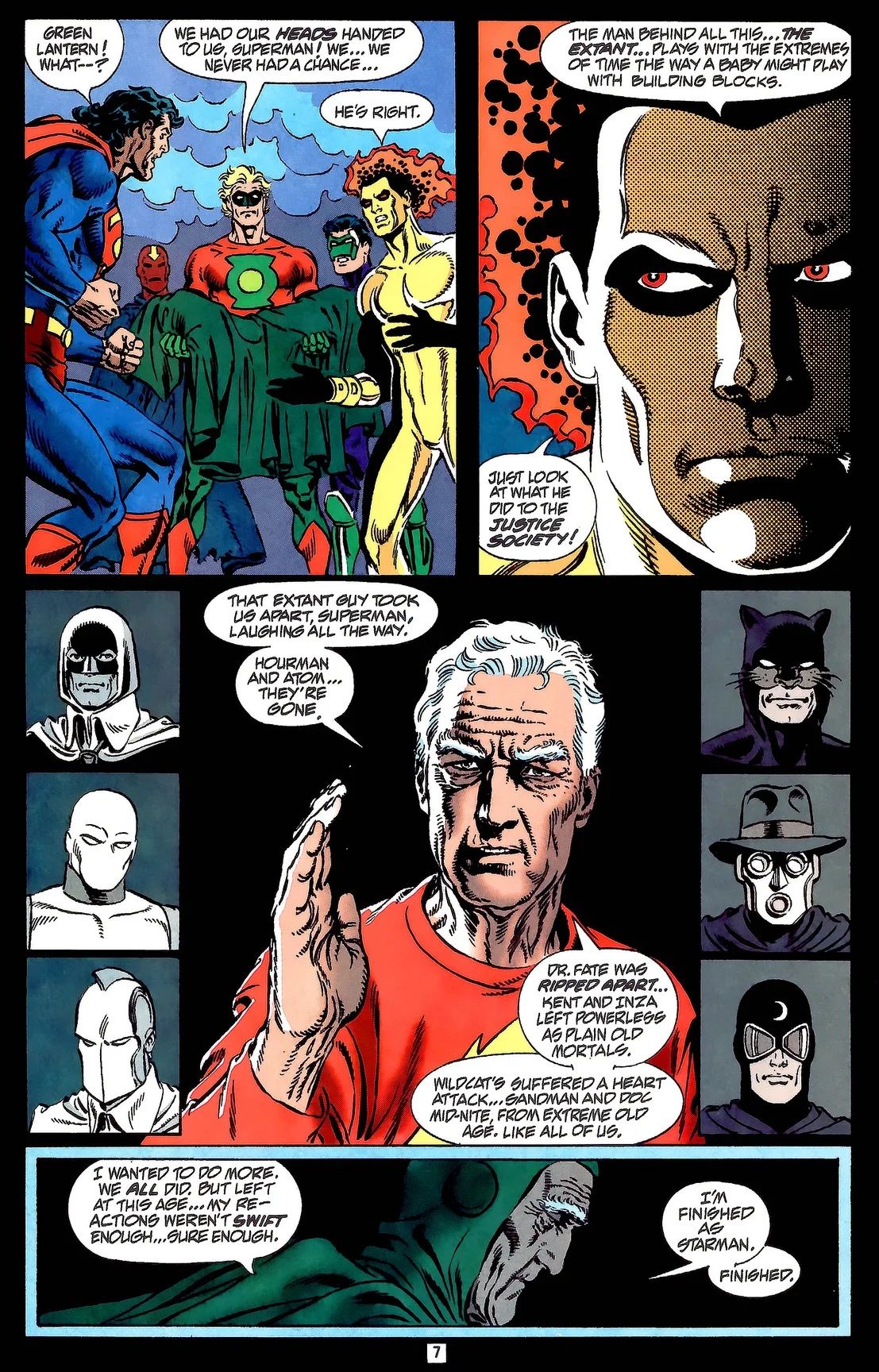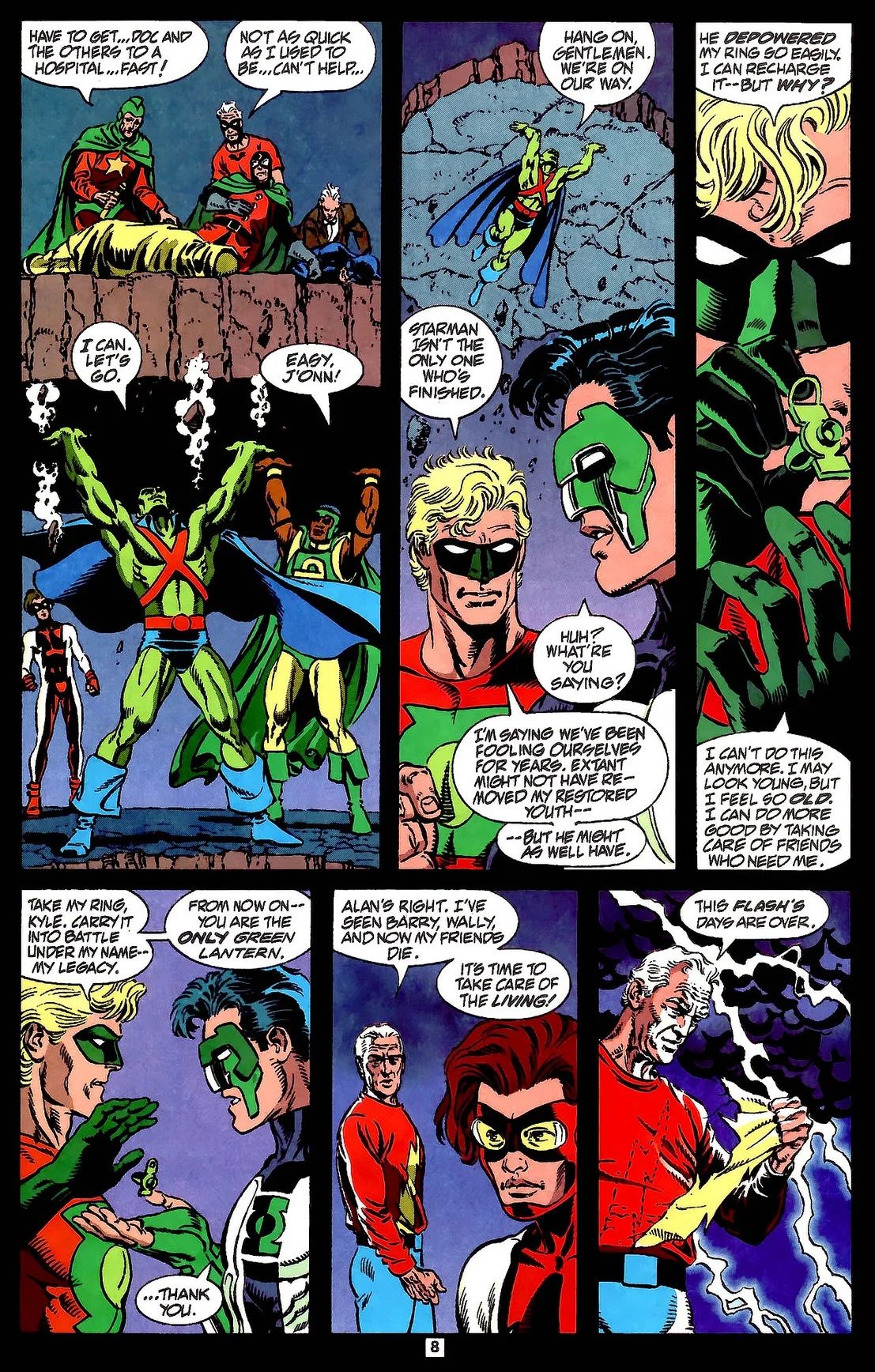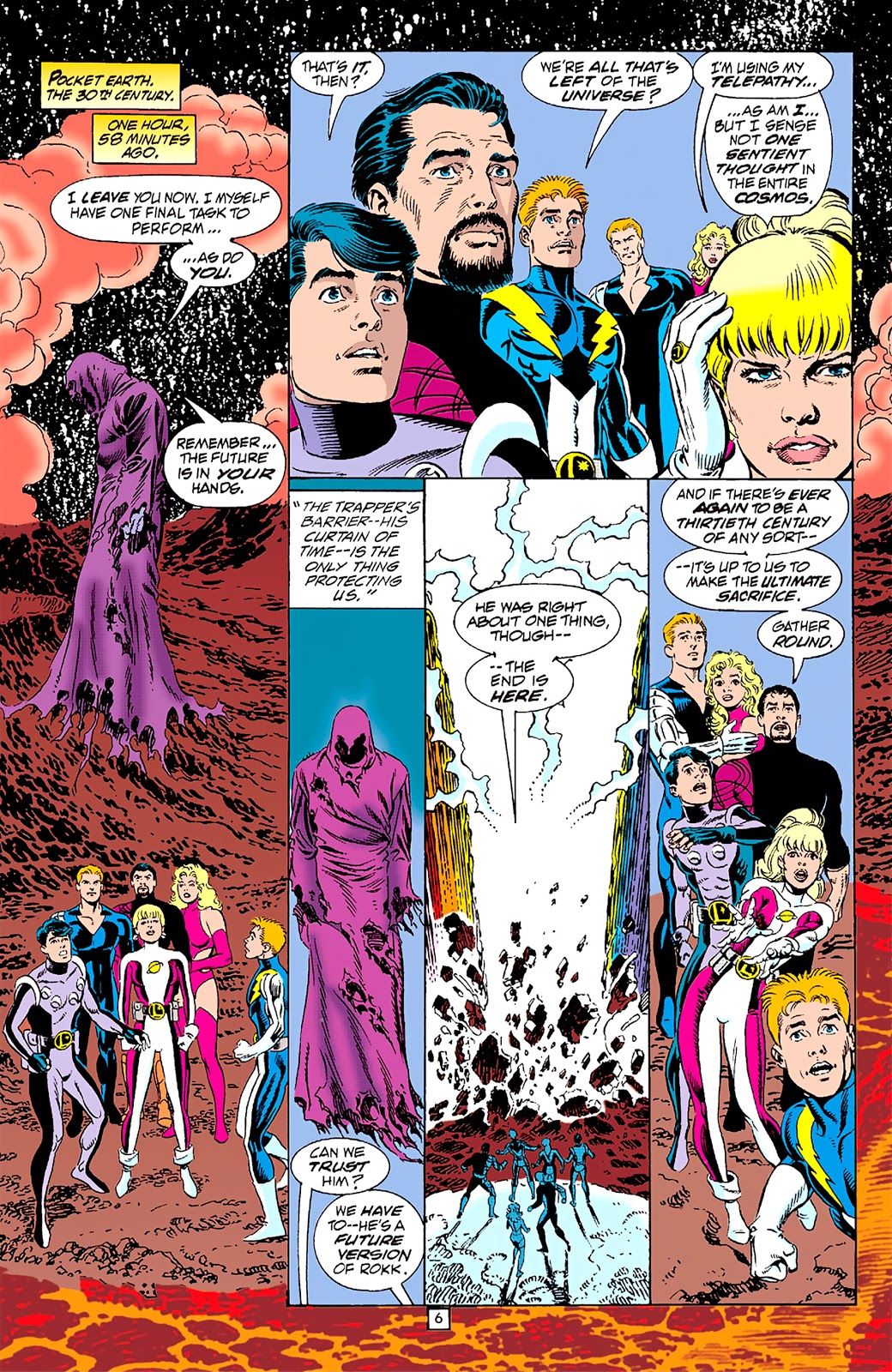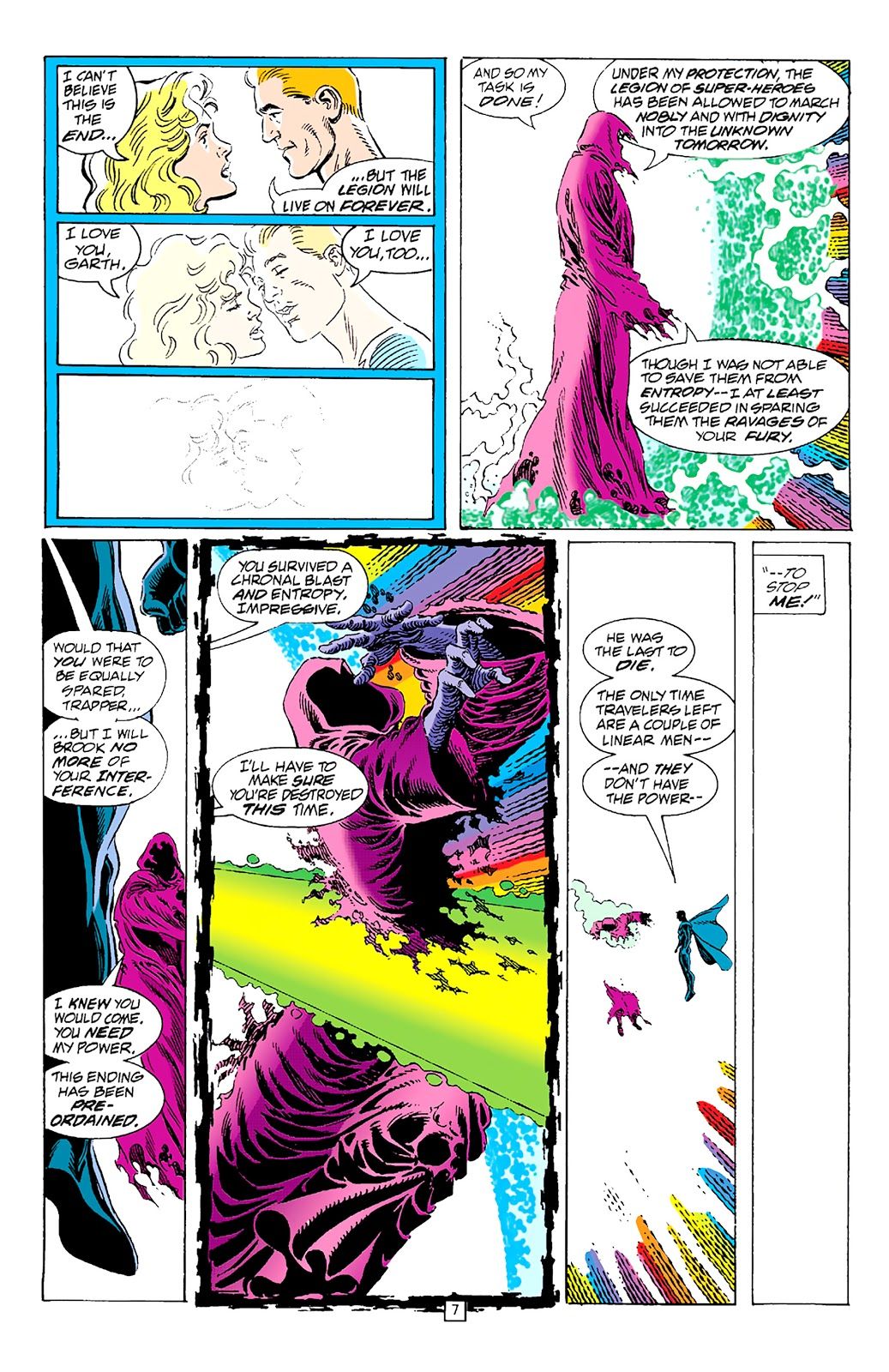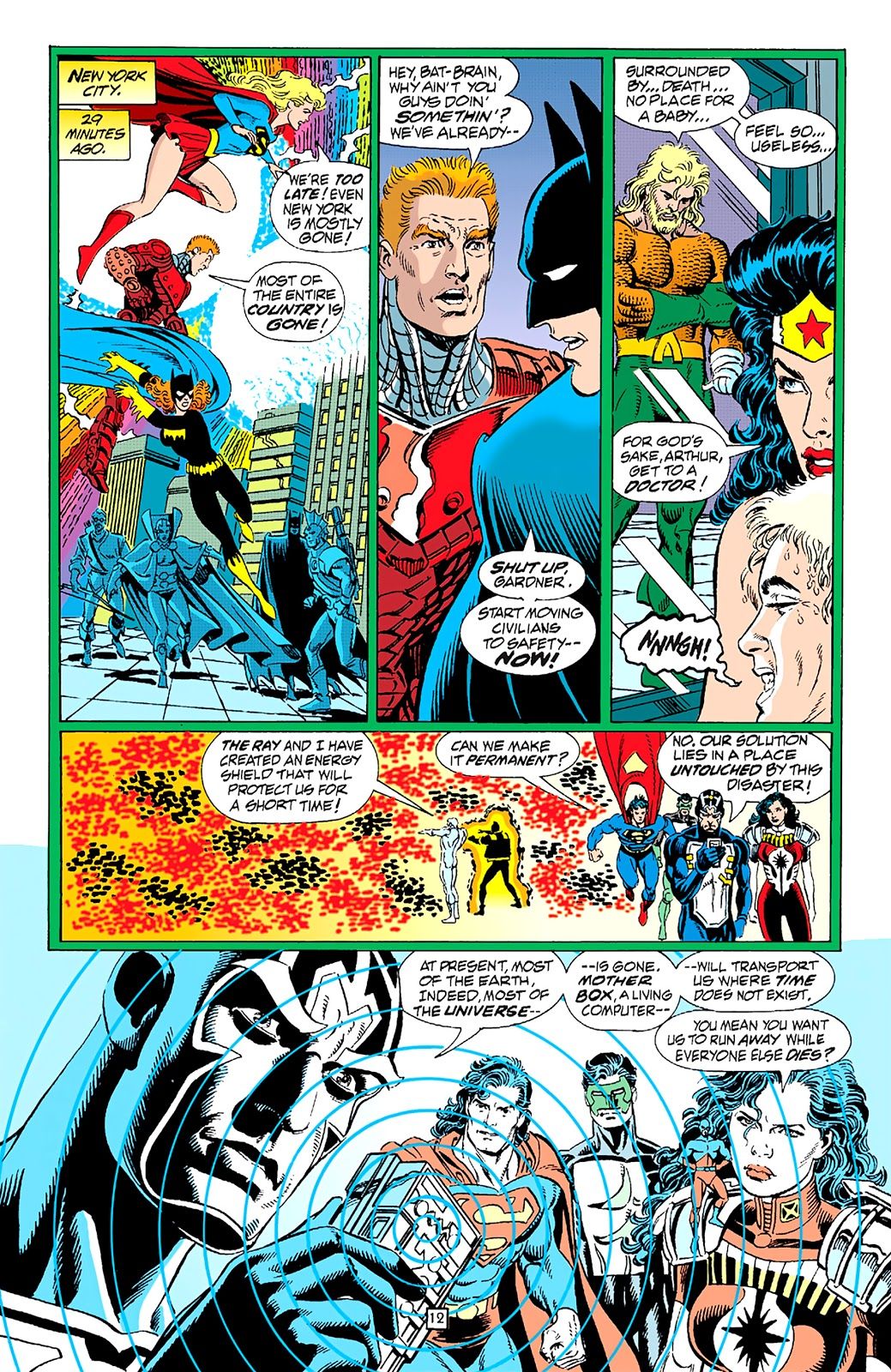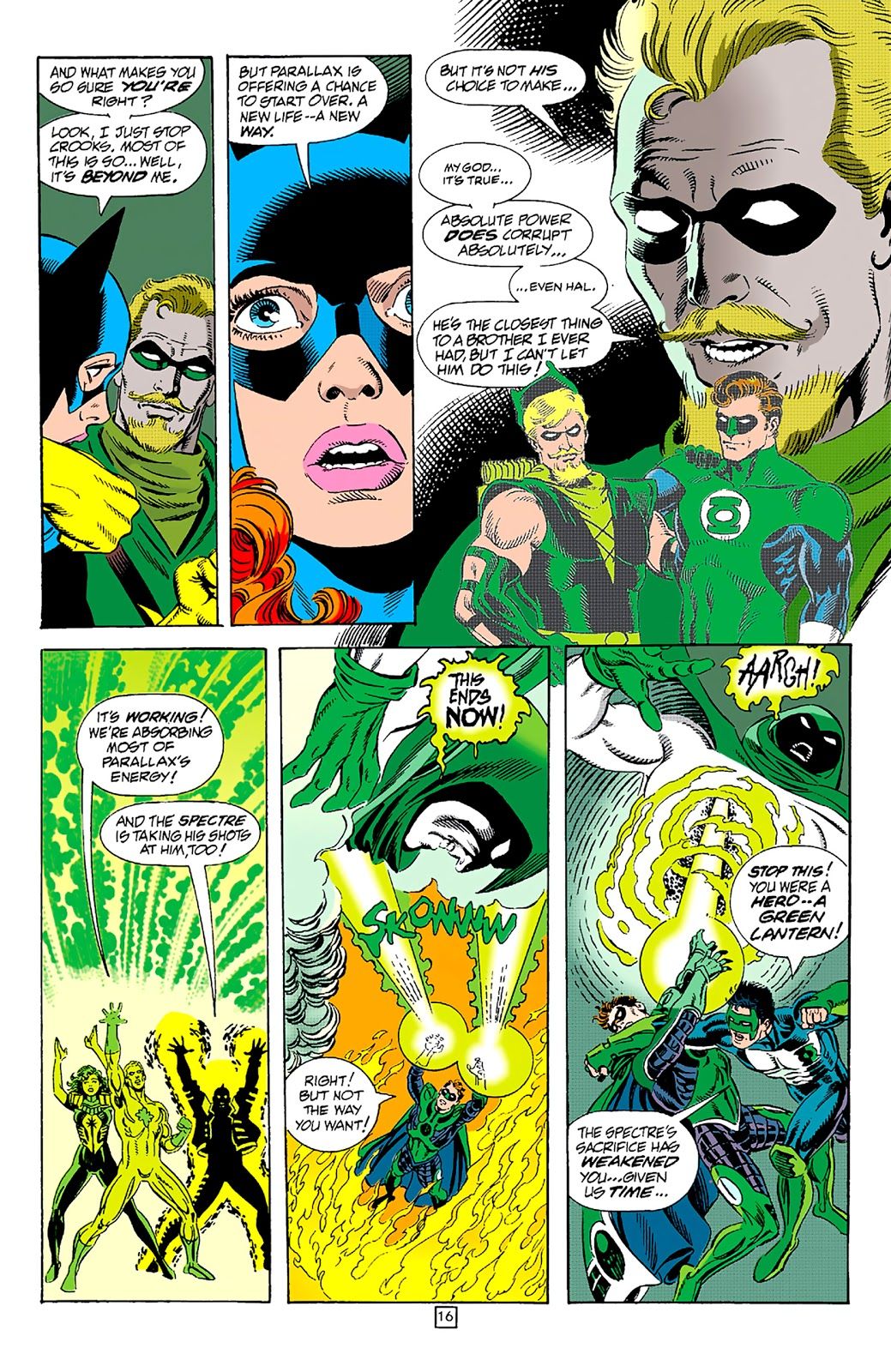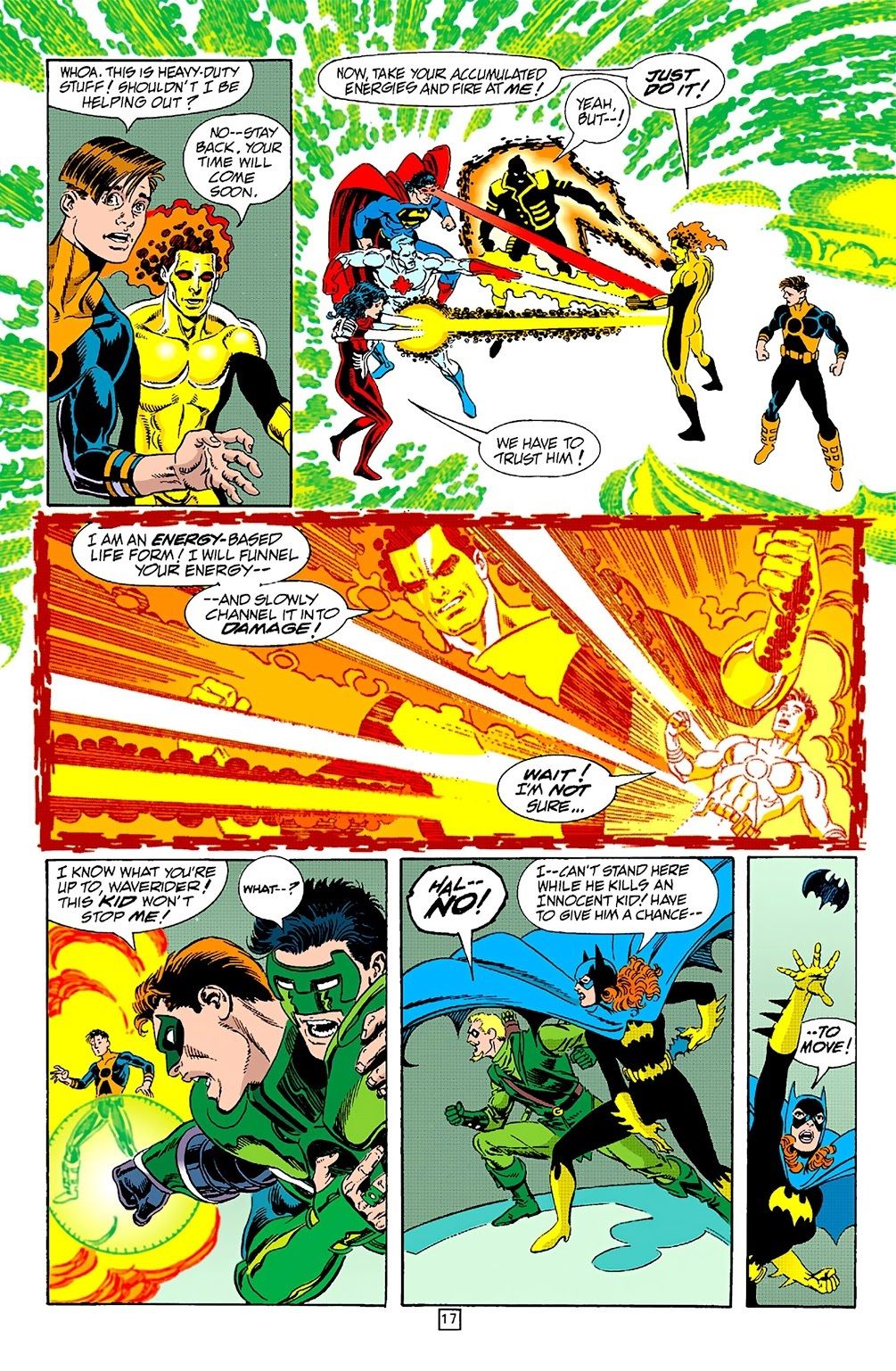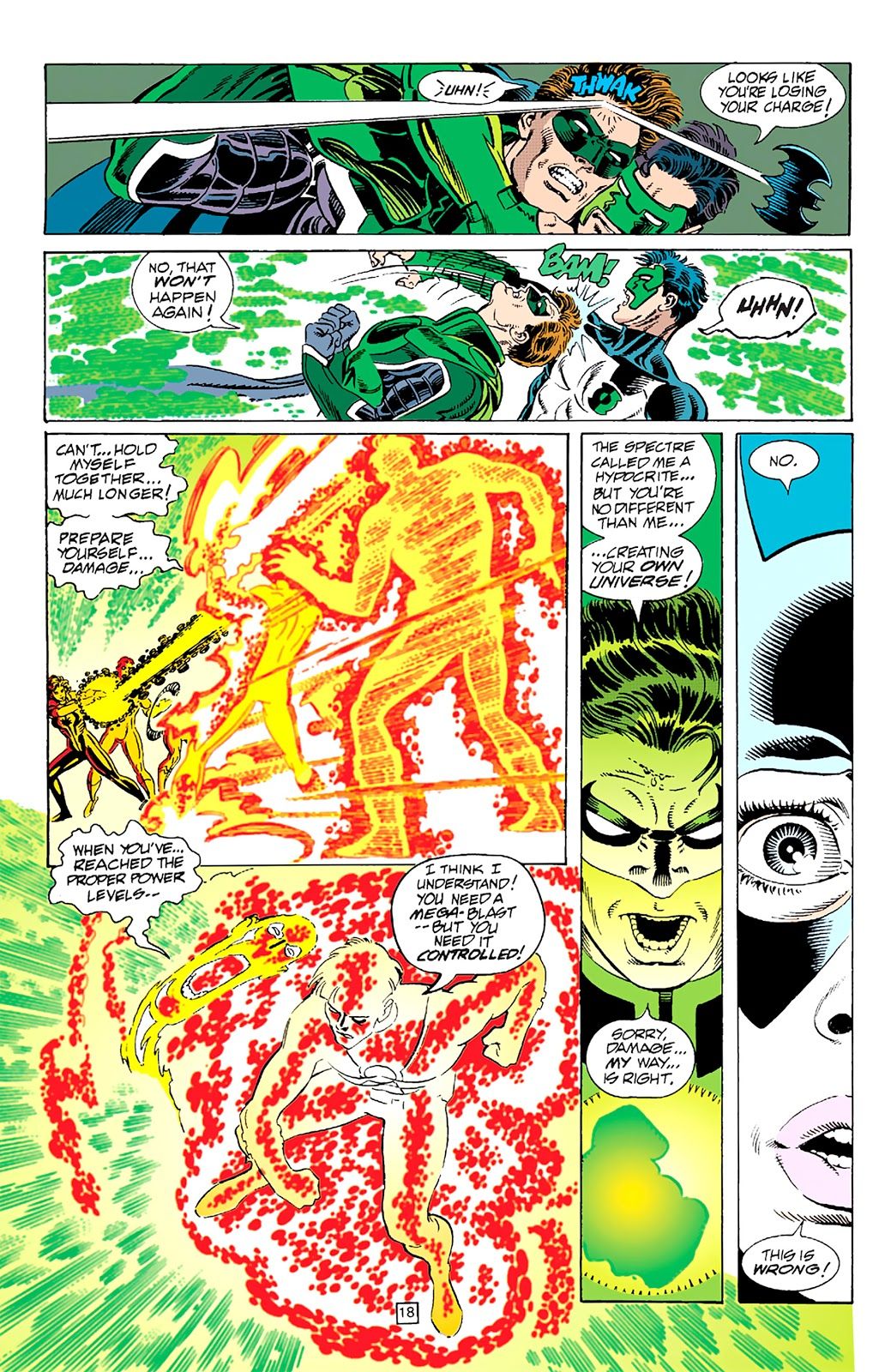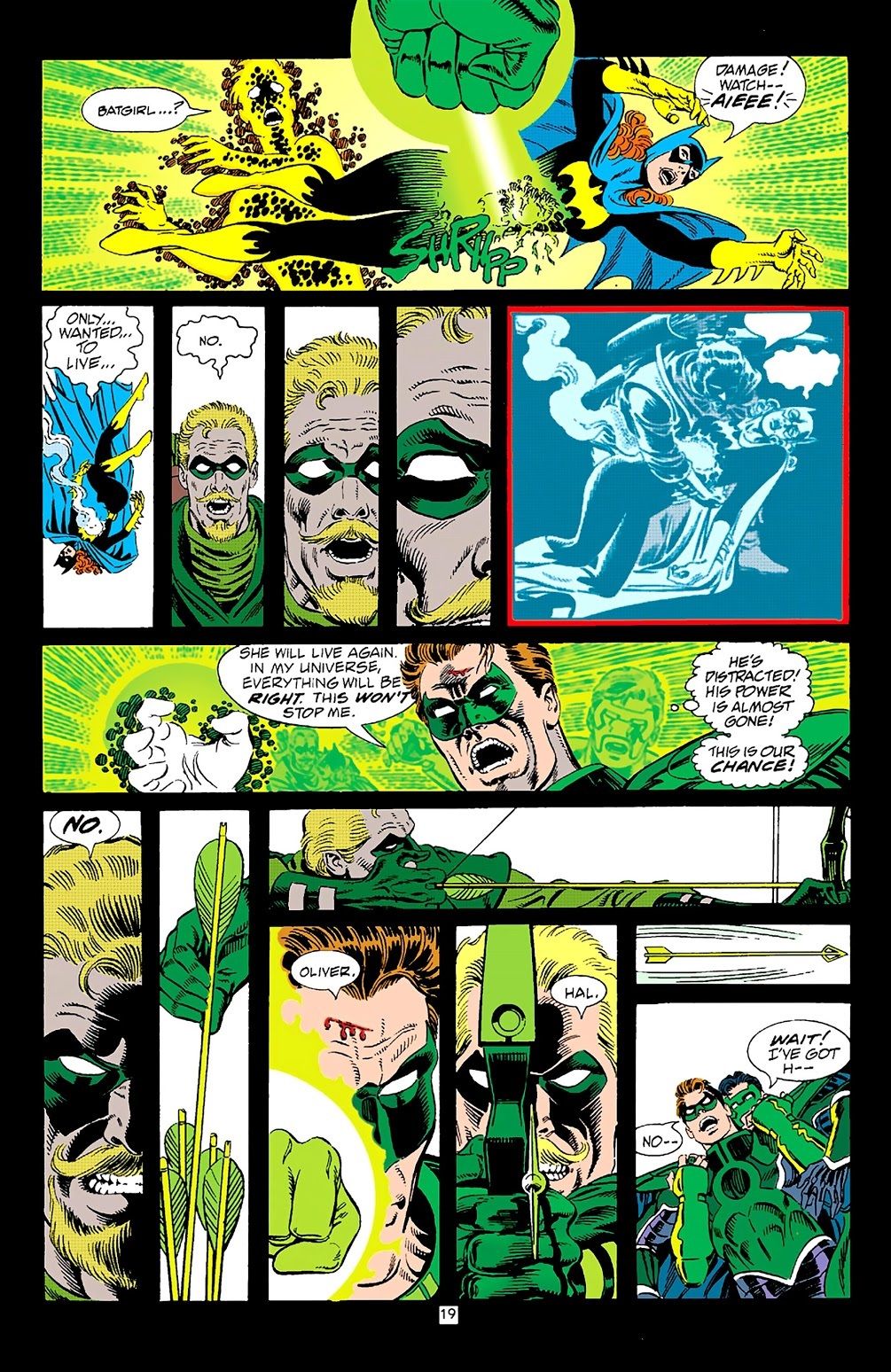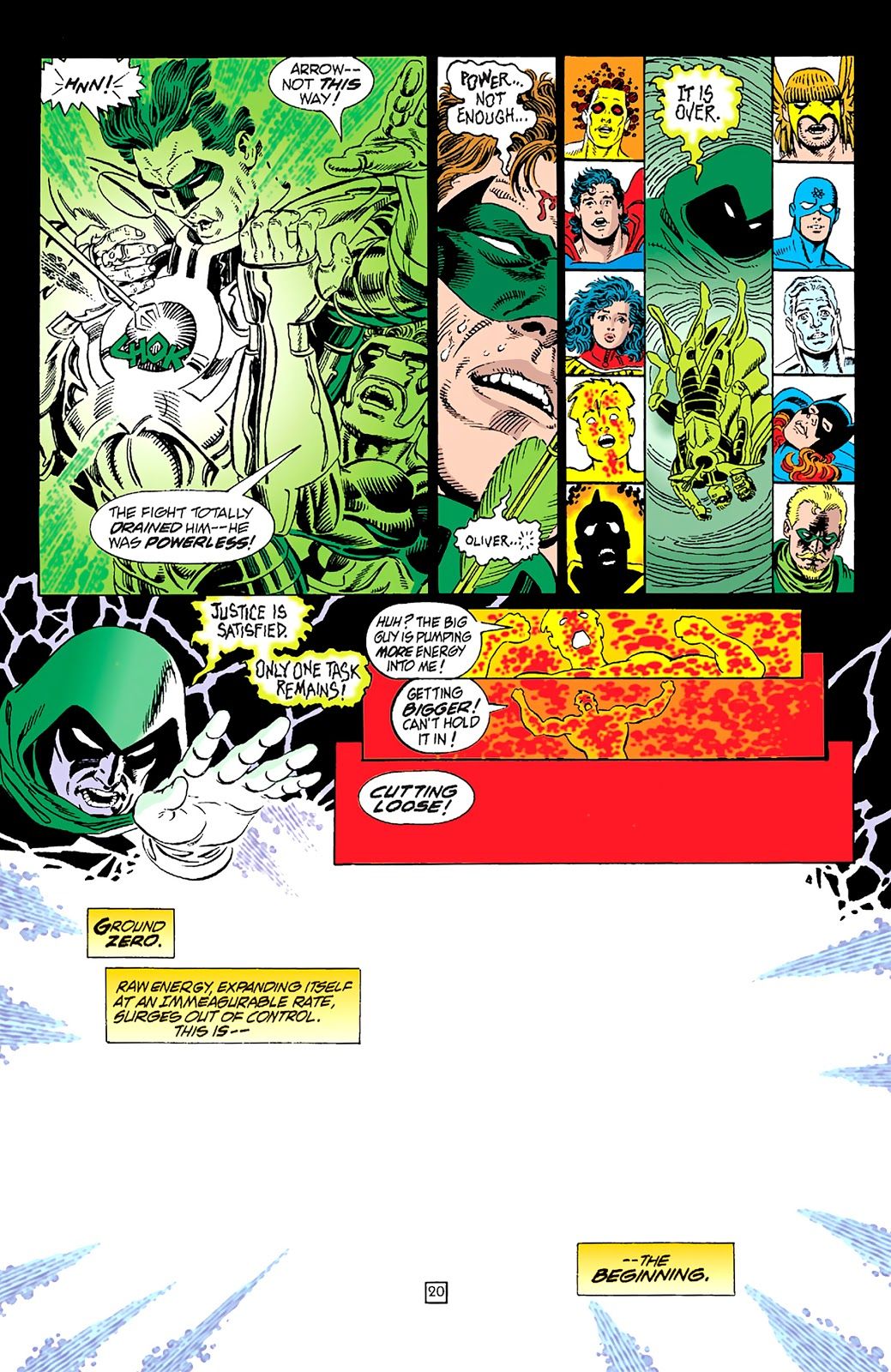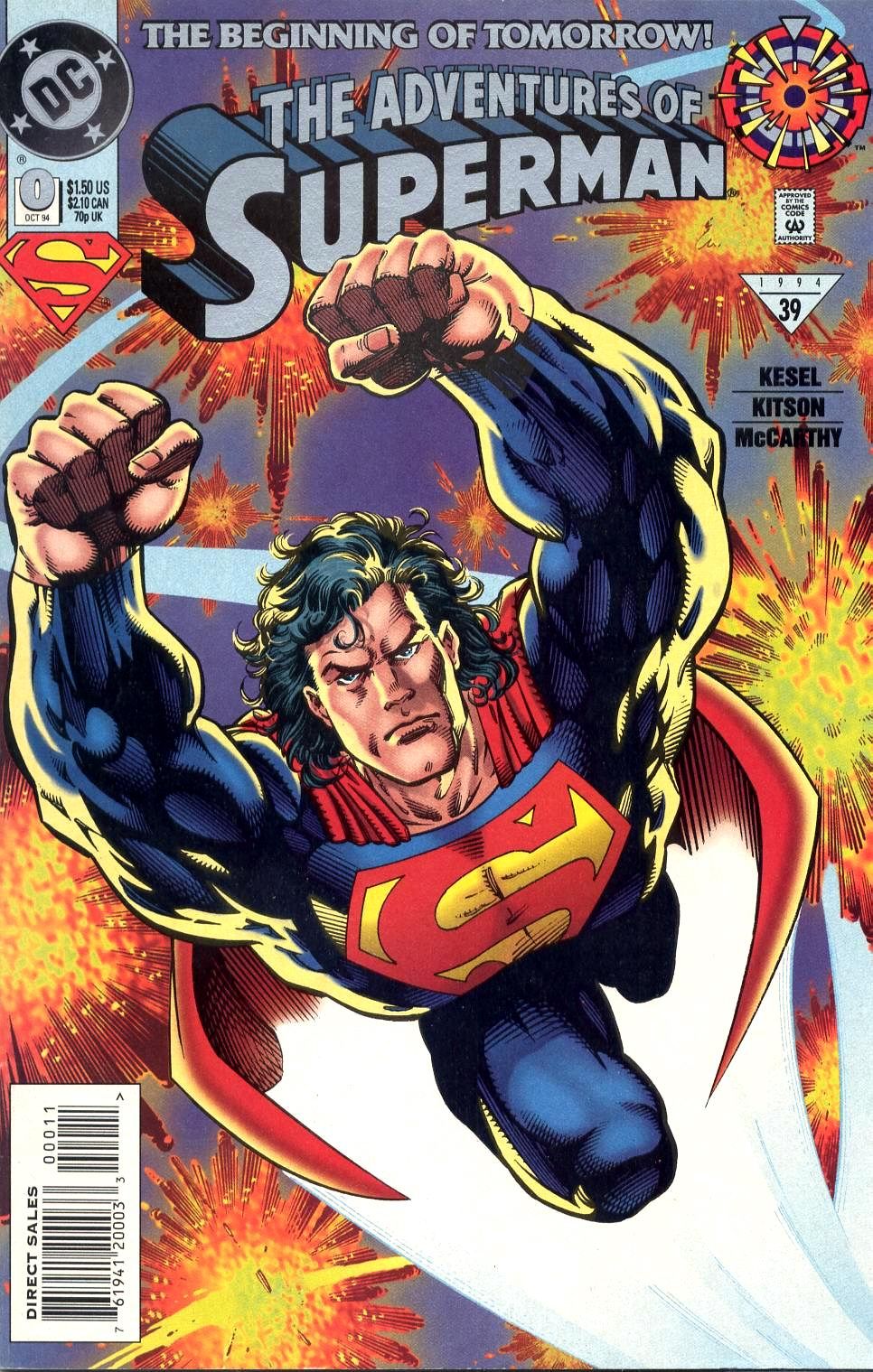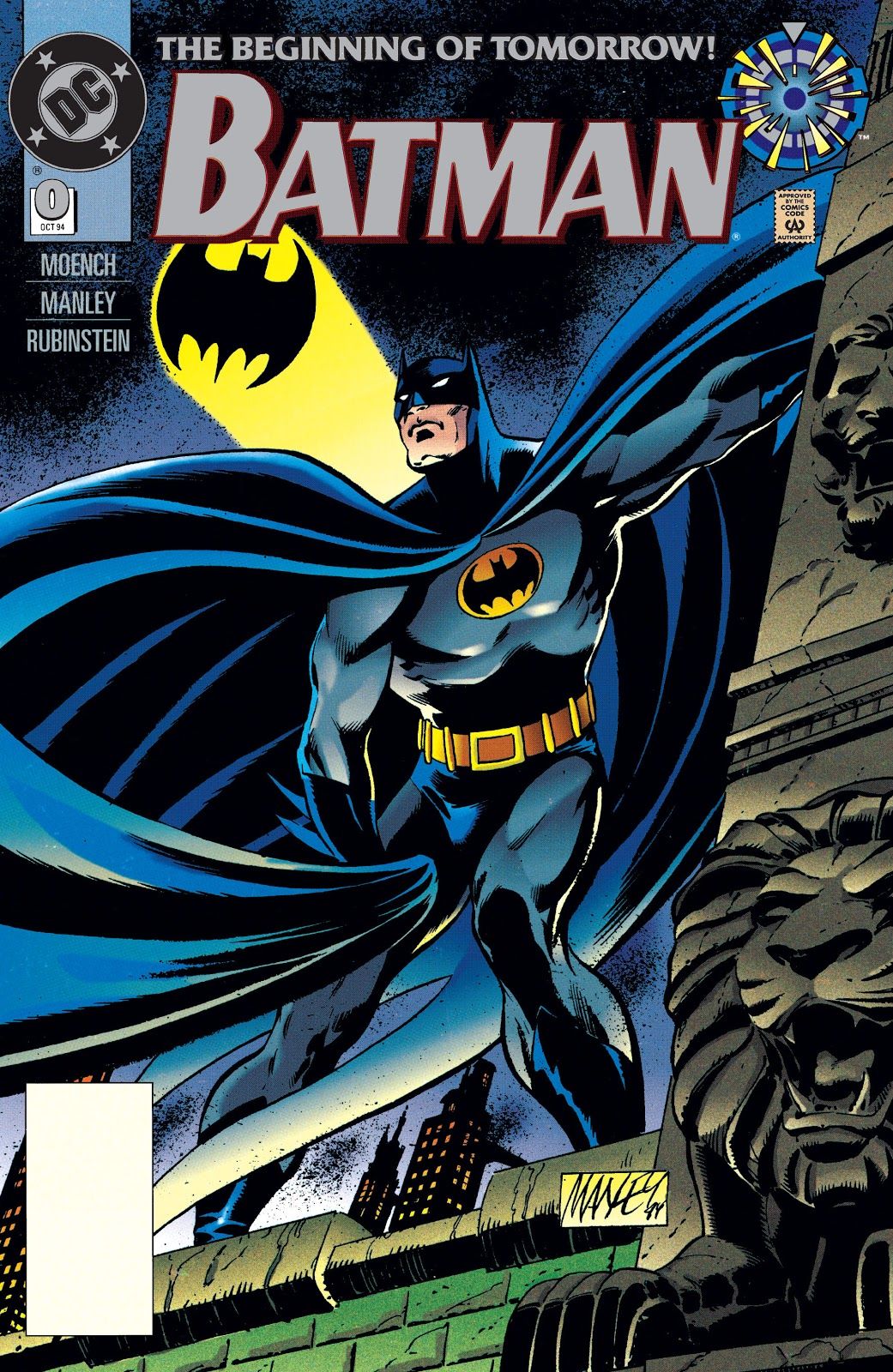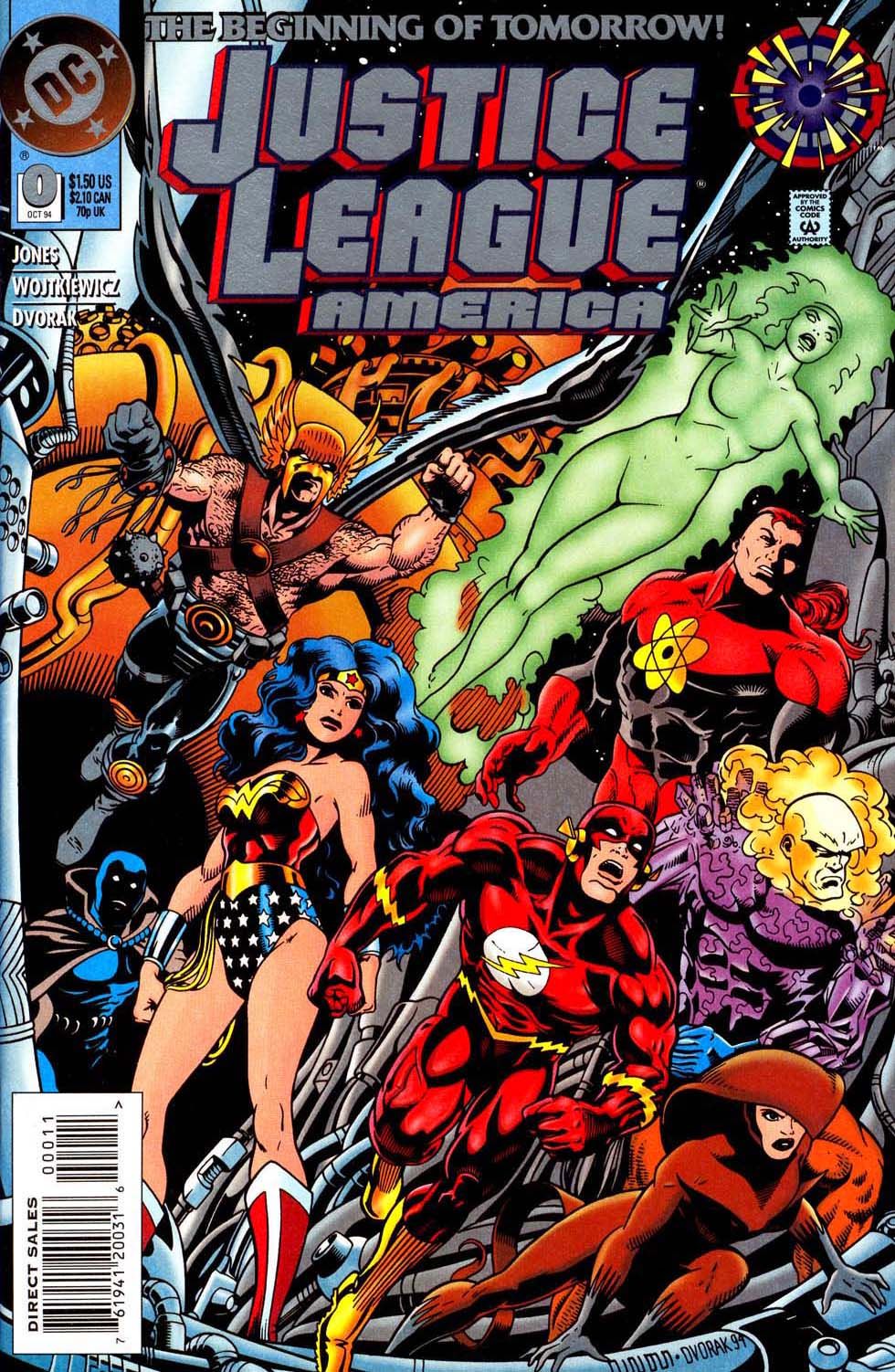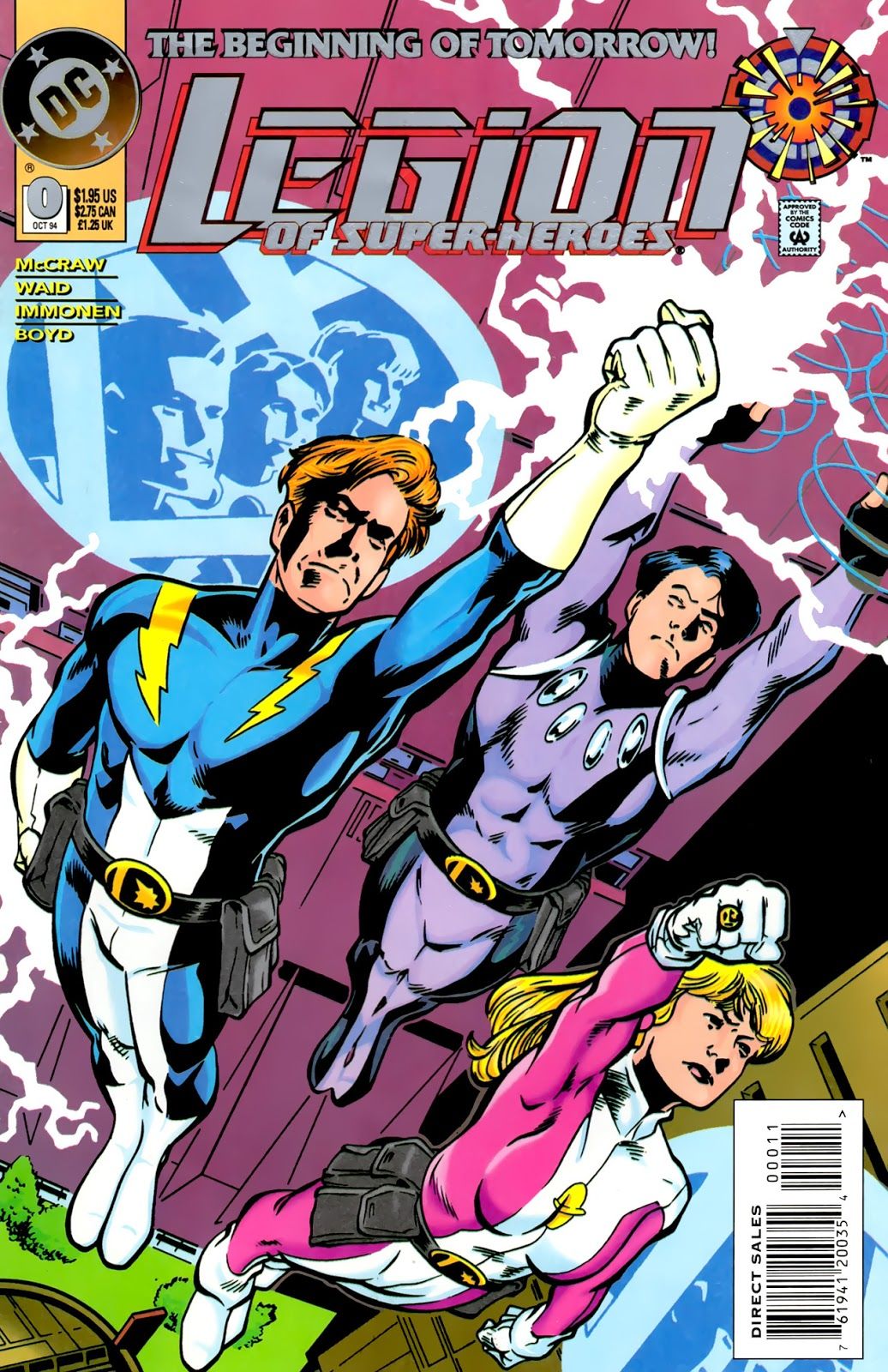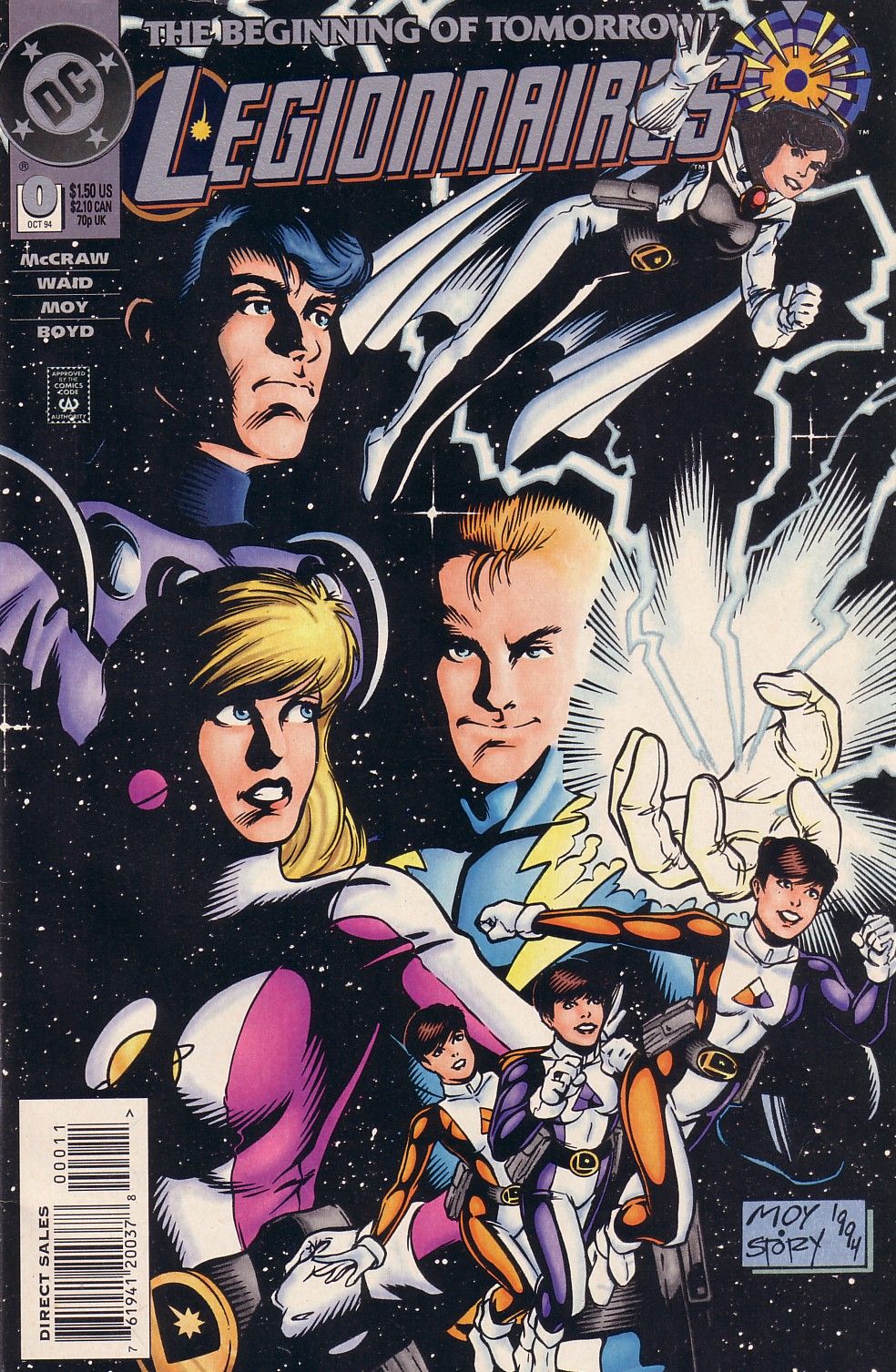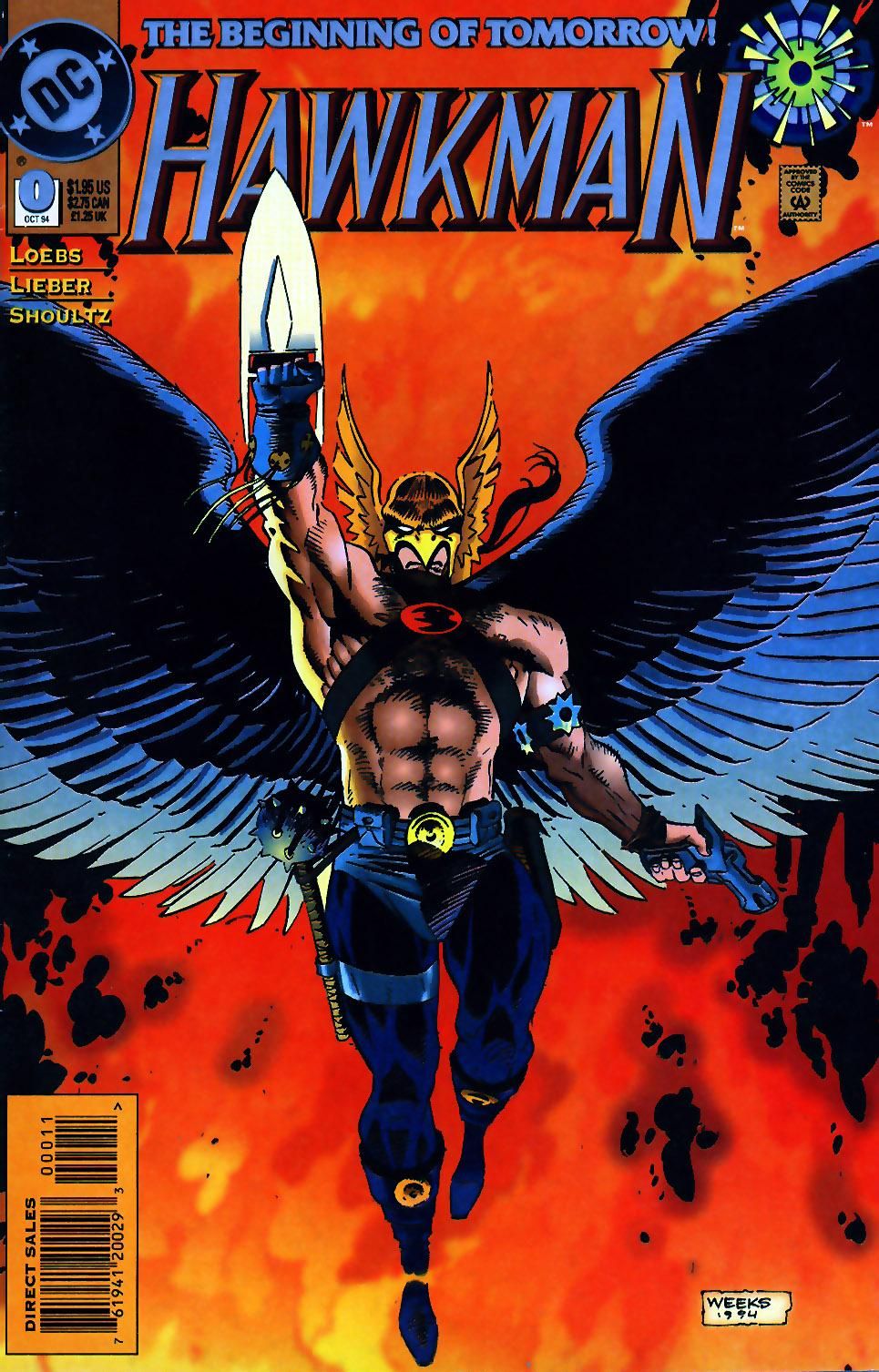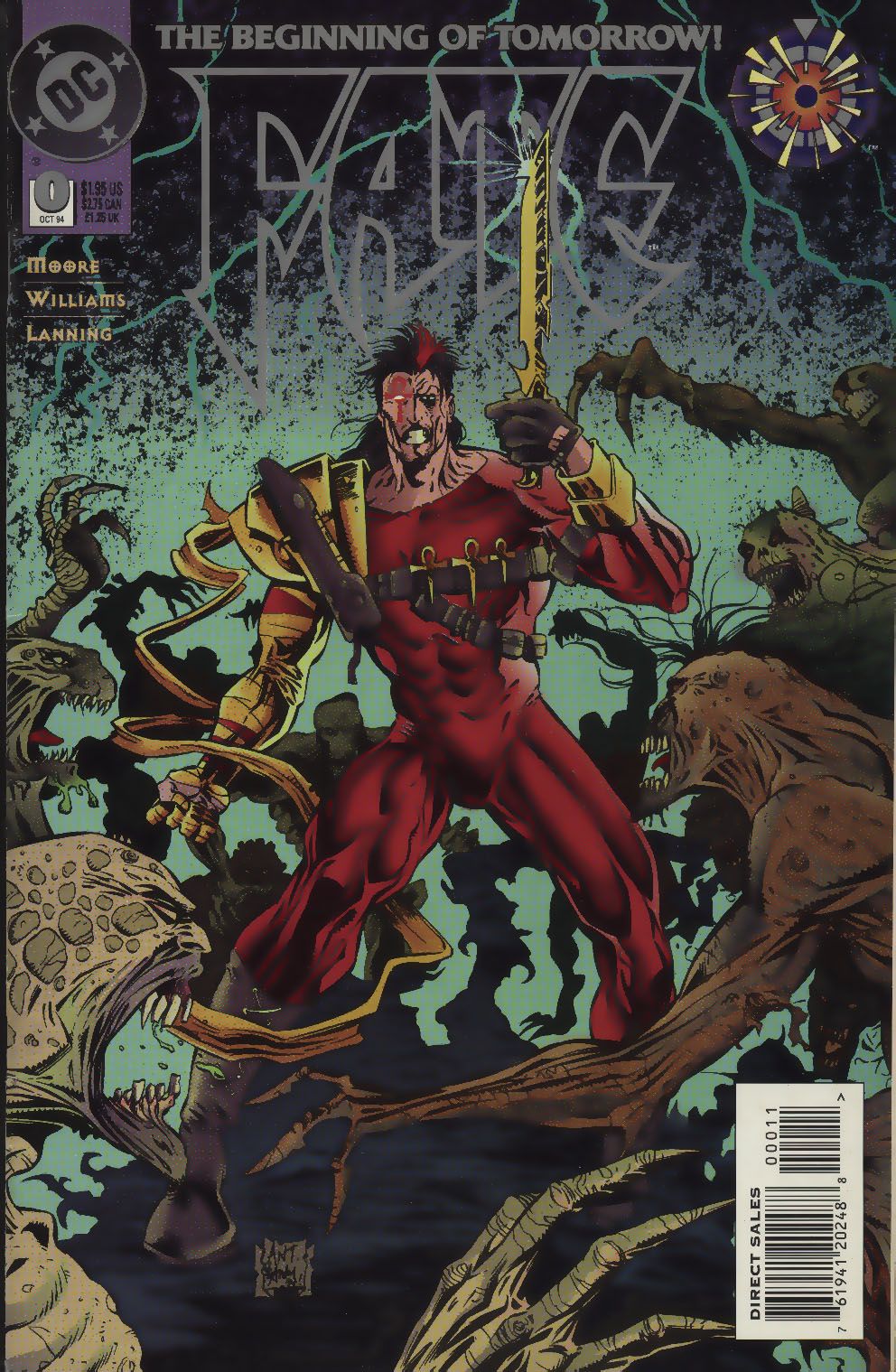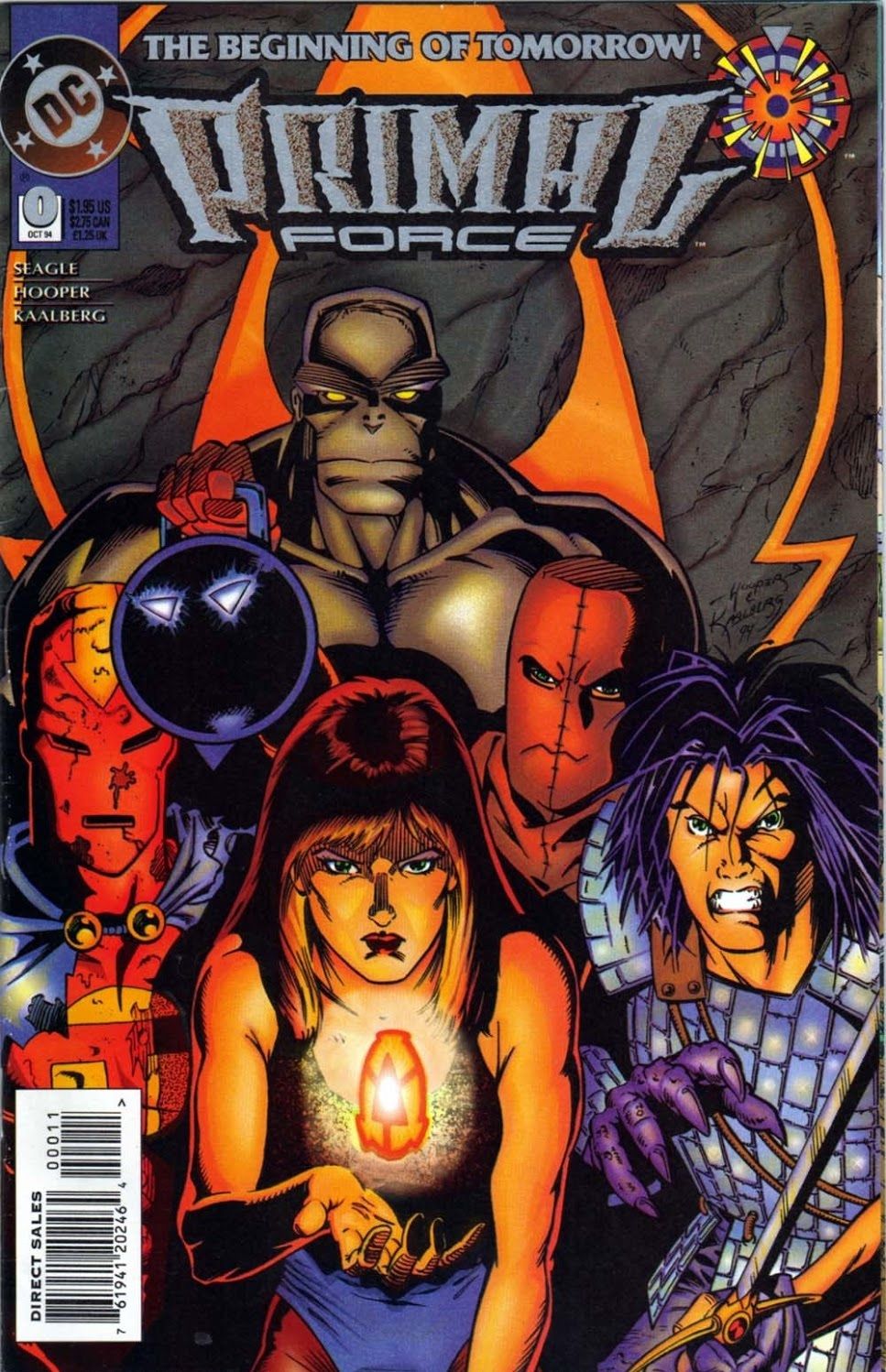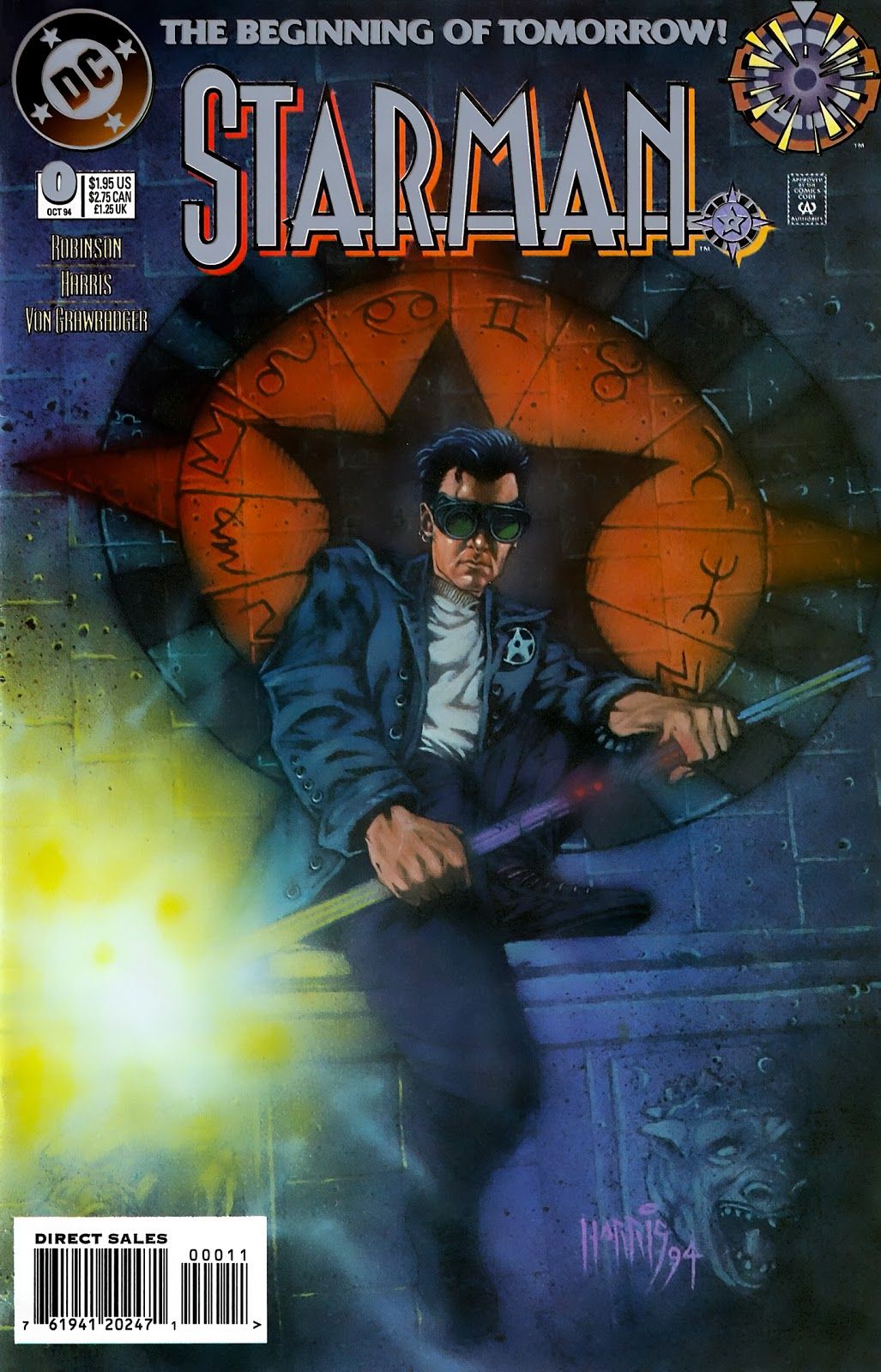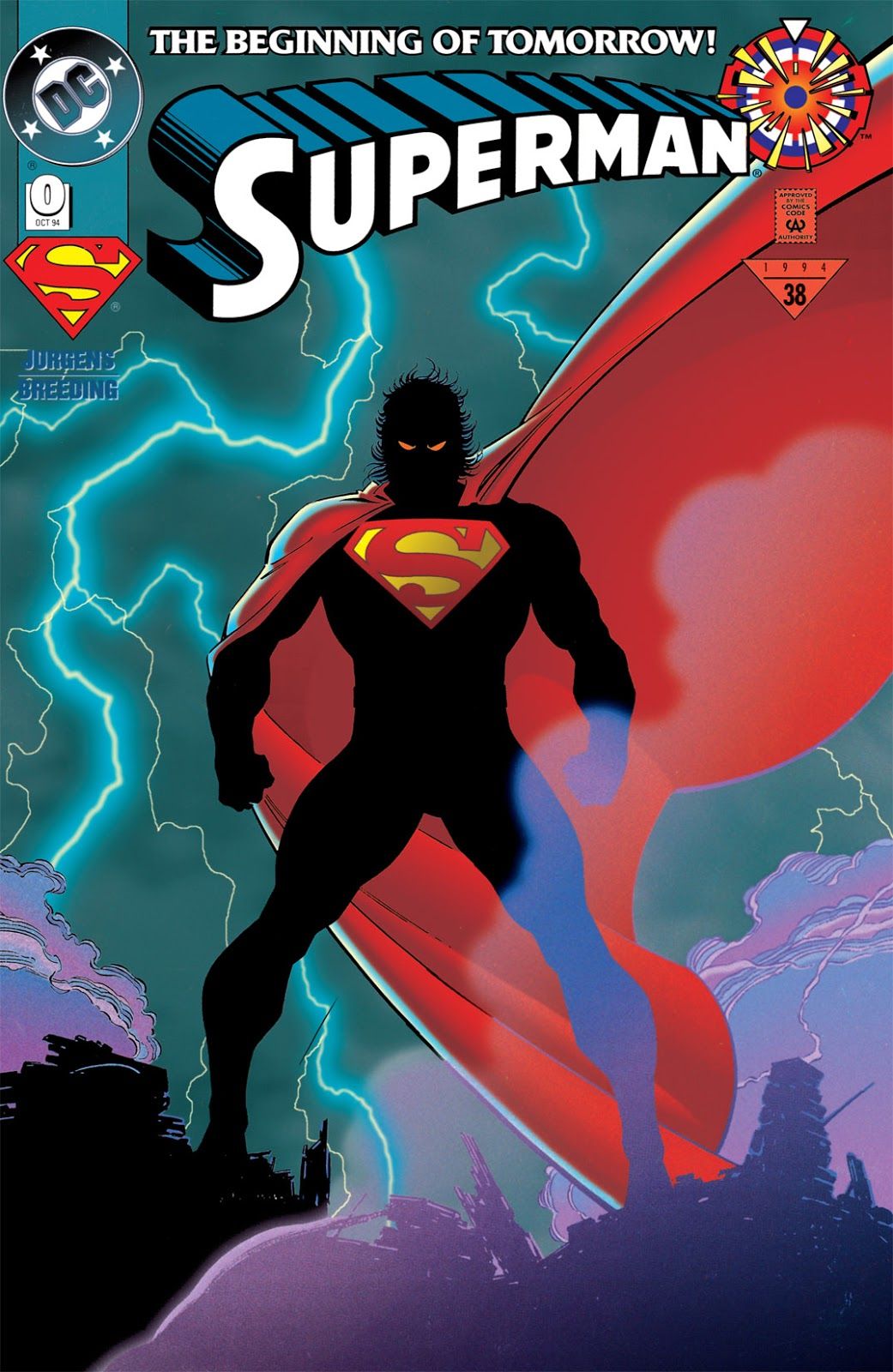This is "Look Back," a brand-new feature that I plan to do for at least all of 2019 and possibly beyond that (and possibly forget about in a week, who knows?). The concept is that every week (I'll probably be skipping the four fifth weeks in the year, but maybe not) of a month, I will spotlight a single issue of a comic book that came out in the past and talk about that issue in terms of a larger scale (like the series overall, etc.). Each week will be a look at a comic book from a different year that came out the same month X amount of years ago. The first week of the month looks at a book that came out this month ten years ago. The second week looks at a book that came out this month 25 years ago. The third week looks at a book that came out this month 50 years ago. The fourth week looks at a book that came out this month 75 years ago.
We continue the August Looks Backs with August 1994's Zero Hour: Crisis in Time #0, by Dan Jurgens and Jerry Ordway.
As you may or may not know, DC did a major continuity shift in 1986 at the conclusion of their epic crossover maxiseries, Crisis on Infinite Earths. The idea was that, instead of having a multiverse of different Earths, things would be simplified by having all of the Earths merged into one standard Earth. The Justice Society, who had existed on Earth 2, would now be in the past of the main Earth. Whether you think it was a good idea or not, the concept was executed well enough.
However, then the little problems crept in. You see, spinning out of this sort of new continuity, DC gave its creators freedom to reboot their main characters. In the case of Batman and Superman, Frank Miller's Year One and John Byrne's Man of Steel re-defined the origins for the two most popular characters at DC, but they were also specifically designed to keep the characters basically the same NOW. In other words, their past changed, but their present remained essentially the same (with some notable exceptions in Byrne's Man of Steel, like Ma and Pa Kent being alive).
Other reboots, though, like Wonder Woman, changed their set-up so that Wonder Woman was just NOW coming to Man's World. This, of course, meant that there was a whole lot of past stories that now could not involve Wonder Woman. For instance, she couldn't very well help found the Justice League in the past and come to United States for the first time in the present, right?
An even more difficult example was Hawkman, whose Hawkworld reboot came a few years AFTER Crisis, so after the Pre-Crisis Hawkman had already had a number of adventures and even joined Justice League International for a while. This reboot also made it so that Hawkman was just NOW coming to Earth, which led to a whole string of attempts to explain away the Hawkman who was in the Justice League in the past if this was the first time that the Thanagarian Hawkman was on Earth. Writers like John Ostrander did their best to come up with stopgaps (the Hawkman from the Justice Society of America decided to join the Justice League as a sort of transitional hero, which explained how there was a Hawkman on the Justice League if Katar Hol didn't show up on Earth until the present - and that alien Hawkman who was on Justice League International? Him? Oh, he was a spy PRETENDING to be Carter Hall's son! Yeah, that's the ticket!).
Heck, even the Man of Steel reboot, while not changing Superman's present that much, did a major change to Superman's past that had ripple effects on the rest of the DC Universe. That reboot made it so that Clark Kent never became Superboy. He did not become a superhero until he was Superman as an adult. Similarly, Superman was the ONLY survivor from Krypton. As a result, that meant that there could not be a Supergirl (she had died in Crisis on Infinite Earths and now she was wiped from everyone's memory, which also made the question of "What do people remember from Crisis?" a confusing one for years). The problem with that is that the Legion of Super-Heroes' past heavily involved Superboy and Supergirl. The first solution was to reveal that the Superboy that the Legion met came from a Pocket Universe. He died and later, an alien from that pocket universe came to the regular DC Universe and shape-shifted into a new Supergirl. However, it was then decided that the pocket universe idea was no longer a good one, so a few issues into the 1989 Legion of Super-Heroes series, the book was sort of rebooted mid-series and now the Superboy and Supergirl roles were instead taken up by Daxamites, Lar Gand (previously known as Mon-El) and Laurel Gand.
Were those earlier paragraphs confusing? They should be. They certainly were to a few creators at DC in the early 1990s. So Dan Jurgens came up with an idea (which he developed with editor KC Carlson) - why not do an event where the various writers at DC could use to alter whatever parts of their history that they wanted altered? It was really one of the most unselfish superhero crossover concepts that you could imagine. Jurgens was pitching a crossover that was built around letting OTHER creators decide what they wanted to fix with their titles. Not, you know, like erase history or whatever, but do tweaks and stuff like that. It was a novel idea for a crossover.
That's what is so fascinating about some of the biggest changes within Zero Hour. Jurgens is the guy who nominally wrote and drew these major changes, but rarely were any of them actually HIS decisions. They were just him letting other creators tell him what they wanted and he would adapt that into his crossover. Can you even imagine how annoying that must be to write? To try to fit together multiple different viewpoints and crystallize them into a narrative that still made sense? Not only that, but Jurgens was DRAWING the darn thing, to boot (well, layouts that were finished by Jerry Ordway, but still)! Not only THAT, but the whole thing was done so that it could be released WEEKLY for five issues from July through August, with the final issue being released on August 11, 1994. The series was cleverly designed to run BACKWARDS from #4 through the final issue, #0.
A great example of Jurgens working with other creators' ideas is the solution to the Hawkman crisis. Editor Archie Goodwin was the driving force in the decision to essentially merge all of the Hawkman characters into one solo Hawkman...
That didn't really simplify much (and it probably made things MORE confusing), but hey, again, this was not Jurgens' call, he was just being a good guy and doing what other folks thought would make sense for their characters.
Similarly, Jurgens had a plan for the Justice Society that went in a VERY DIFFERENT direction once editorial got involved. In an article by my buddy, Christopher Irving, Jurgens explained his original plan for the original DC superhero team...
“It wasn’t that there was a hard-core decision to kill members of the JSA, it was more of a decision based off the fact that there was a problem with the various ages between the Silver Age characters and the JSA characters,” Zero Hour writer and artist Dan Jurgens said. “What was happening was that by virtue of the fact that you were aging the Silver Age characters, the same had to hold true for the JSA characters. What you got into was this eternal dichotomy that exists in comics: when the Golden Age characters were reintroduced in the 1960’s, they would have been about those ages, around 45 to 50, which is why it was okay for Jay Garrick to have a little silver around the temples. All of a sudden, all of our Silver Age characters, for better or worse, had gotten to the point where they’d gotten to those ages. Also, the JSA had always had a very firm tie-in to World War II. The JSA has always been tied firmly into World War II; consequently, these guys are all about 85 to 90 years old.”
According to Jurgens, however, it was never his contention to leave the JSAers completely out of action by the end of Zero Hour. The failed attempt by the rogue Silver Age Green Lantern to rebuild the multiverse was originally meant to end differently:
“What would have happened if the Hal Jordan/ Parallax character create other Earths, I wanted one Earth to survive to put the JSA on, and give them back Earth-2. If you had that separation, they would always have a place to be where time could exist on its own, and they could exist with the DC Universe.
“More than anything, it was an editorial decision that DC did not want to go through with it. Often the final decision that sees print, is one of consensus, which doesn’t always make it the best decision. At that time, I wanted to go with the separate Earth that would have had the JSA exist at a different point in time than the DCU. For a variety of reasons, we decided not to go that way.”
That consensus decision was that, rather than split the Justice Society into their own Earth, was to instead, well, pretty much WIPE OUT the Justice Society, as most of them fell in battle against the evil Extant...
The Legion's continuity problems are handled in much the same way as the Justice Society's, as they are just fully wiped out from history in Zero Hour #1...
One of the most amusing things about Zero Hour, which struck me at the time but is even more amusing in retrospect, is how Jurgens had to deal with a cast that was mostly dictated by outside forces. Guy Gardner was in the midst of a transformation into Warrior (where he discovered that he was part alien and had the ability to transform his body into weapons) and he just happened to be wearing armor for a brief period of time and that brief period of time just so happened to coincide with Zero Hour, so Guy Gardner is rocking this ridiculous looking armor for the entire miniseries, where he is a prominent character. Meanwhile, Power Girl is pregnant as part of some ridiculous plot from the Justice League series that went NOwhere, so Jurgens has to work in her pregnancy and it becomes a big deal within the series but obviously Jurgens doesn't know what the Justice League writers planned to do with Power Girl (I don't think the Justice League writers knew, to be honest), so that whole plot looks ridiculous in retrsopect. Similarly, since every major DC hero is present in the story, then Aquaman has to be in there, but he literally JUST GOT HIS HAND BITTEN OFF, so he's just rolling through the series like, "Oh man, my hand is missing." It's hilarious and it is all here on one page!
Think about how annoying that must be for Jurgens to work all of this stuff into his plot!
However, Jurgens still got to tell a lot of the story that he wanted to tell and a lot of it was based on some excellent character-driven moments. The big bad of the series turned out to be Hal Jordan, who was manipulating Extant as part of his plan to reboot the universe and "fix" everything (Hal had gone insane in the pages of Green Lantern after his home, Coast City, had been destroyed. Hal became obsessed with bringing it back somehow), even if he has to destroy everything first. The heroes obviously object to this, but that is tough for someone like Batgirl, who comes from one of the alternate universes that Hal created (a universe where Batgirl was never shot). The heroes come up with a plan where they could use the abilities of Damage (a then-new character who lucked into becoming a major part of this event) to effectively restart the universe without Hal's influence.
Batgirl realizes the "right" side and sacrifices herself to stop Hal and then it comes down to Hal Jordan's best friend, Oliver Queen, to choose to kill Hal rather than let his plan go through, thus leading to the universe being rebooted without Hal's influence...
Once this was all done, the DC Universe was back to normal, but obviously, as noted, everyone got a chance to make any little change that they wanted to. This led to a month of #0 issues, that let series essentially do a series Bible in one comic book, so series could sell the books to new readers (who would be coming in from this major hit crossover)...
Including a brand-new version of the Legion, starting from scratch...
Plus the new Hawkman...
Also, some new series launched with #0 issues, including Starman, which lasted the test of time...
As a final note, Jurgens did the Superman #0...
So, for July and August, Jurgens wrote and laid out FIVE issues of Zero Hour plus TWO issues of Superman! Wow!
If you have any suggestions for September (or any other later months) 2009, 1994, 1969 and 1944 comic books for me to spotlight, drop me a line at brianc@cbr.com! Here is the guide, though, for the cover dates of books so that you can make suggestions for books that actually came out in the correct month. Generally speaking, the traditional amount of time between the cover date and the release date of a comic book throughout most of comic history has been two months (it was three months at times, but not during the times we're discussing here). So the comic books will have a cover date that is two months ahead of the actual release date (so October for a book that came out in August). Obviously, it is easier to tell when a book from 10 years ago was released, since there was internet coverage of books back then.

